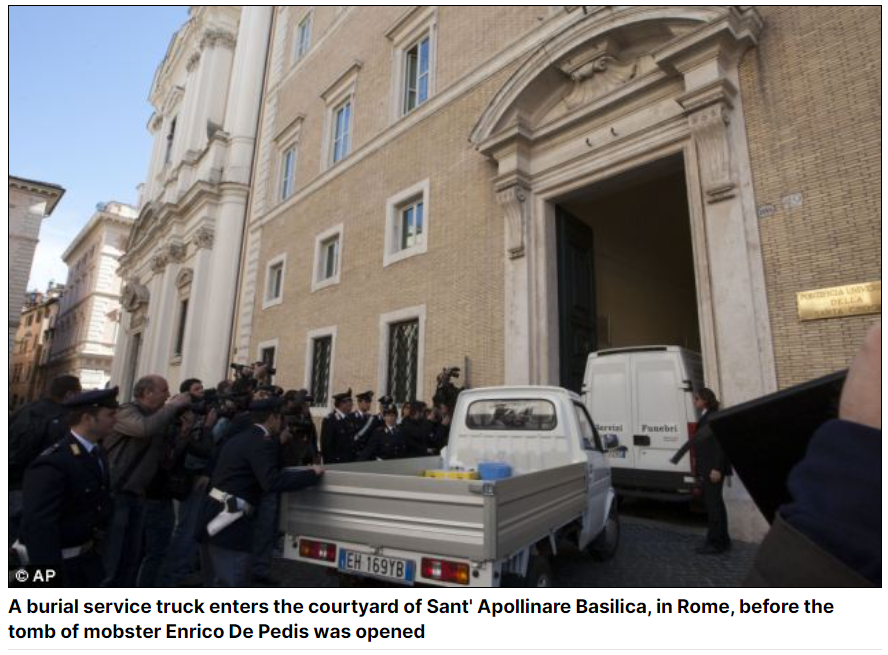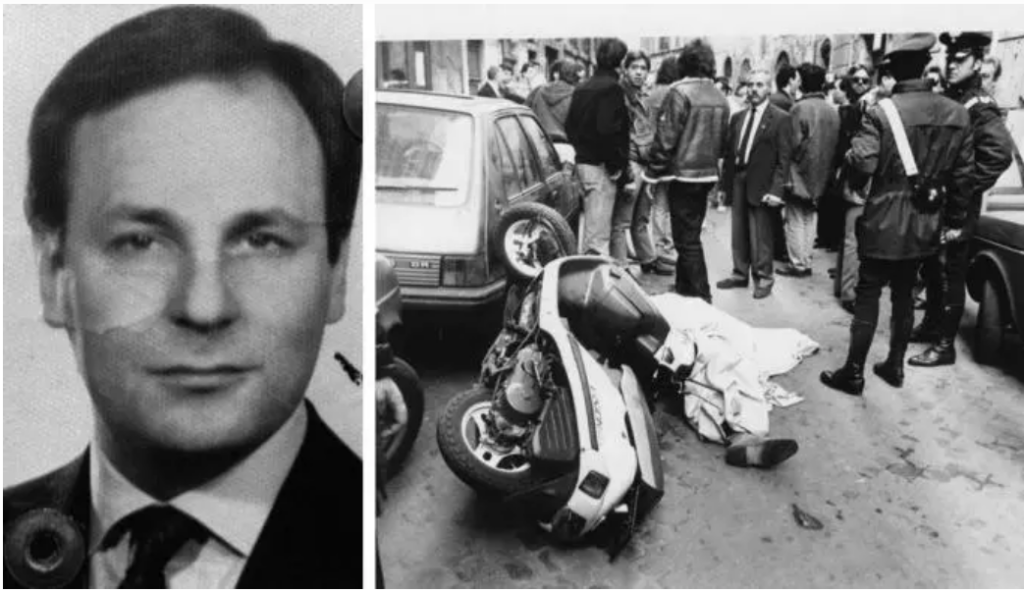On February 2, 1990, Ernesto “Renatino” De Pedis was shot and killed while riding his scooter in the incorrect direction down the one-way Via del Pellegrino, a small lane lined with stores offering books and antiques and leading to Campo dei Fiori, another prominent area. For the assassinated Magliana Band leader, whose wealth was mostly based on loan-sharking and illicit gambling, having his body in the church crypt was an extraordinary honor, especially since he had connections within the secret services.
He was buried in the 18th century church of Sant’Apollinare, which is a stone’s throw from Rome’s central Piazza Navona and which is said to have been built over a temple to the sun-god Apollo, which, as a murdered Roman crime boss, became a troubling object.
The name “Renatino” is highlighted on the side of the imposing white marble mausoleum in gold and sapphires. On top of it is a picture of its owner, with a tiny ceramic angel on either side. Canon law states that only popes, cardinals, and bishops are allowed to be buried in churches; this example demonstrates the peculiar mixing of the holy and profane.
On the suggestion of Monsignor Piero Vergari, who officiated the funeral, Cardinal Ugo Poletti, the leader of the Rome diocese, bestowed the honor upon the slain felon. Vergari wrote to Poletti on March 6, 1990, describing De Pedis as “a great benefactor of the poor who frequent the basilica and has given concrete assistance to many charitable initiatives.” “He specifically assisted the youth, focusing on their education, both human and Christian.” Definitely an odd role model!
It’s possible that De Pedis handled far more delicate matters than providing funding for Sant’Apollinare’s humanitarian endeavors on behalf of the Vatican. Coincidentally, on June 22, 1983, a 16-year-old girl went missing without a trace from a flute lesson she had taken at a music school owned by the Vatican that was next to the church. Mehmet Ali Agca, the Turk who had shot Pope John Paul II two years previously, was reportedly kidnapped by a terrorist organization in an attempt to free him from prison. Emanuela Orlandi is the daughter of a Vatican messenger.
Many witnesses have indicated a link between the Magliana Band boss and the girl’s kidnapping because of De Pedis’ physical similarity to the photofit image of the last person spotted chatting to Orlandi on the night of her disappearance.
During an interview that was published in the Corriere della Sera on September 24, 2005, former prime minister Giulio Andreotti offered his thoughts on the issue. He thought about the health certificates that would have been needed to move De Pedis’s body from its original resting place in the Verano cemetery to its final resting place in the crypt of Sant’Apollinare. He also recalled the bureaucratic challenges faced in obtaining permission for the burial of his illustrious predecessor Alcide De Gasperi in the porch of the church of San Lorenzo fuori le Mura. With characteristic sardonic humor, he noted, “Perhaps De Pedis, having been assassinated, presented less risk of infection.”
The way the Catholic Church treated paralyzed muscular dystrophy victim Piergiorgio Welby, who fought for the freedom to be removed off the artificial respirator that had kept him alive for his last nine years, stands in stark contrast to how it honored De Pedis after his death. Welby’s wish came true in December 2006. The church refused to grant his relatives’ request for a Catholic funeral since they believed it to be an assisted suicide.


